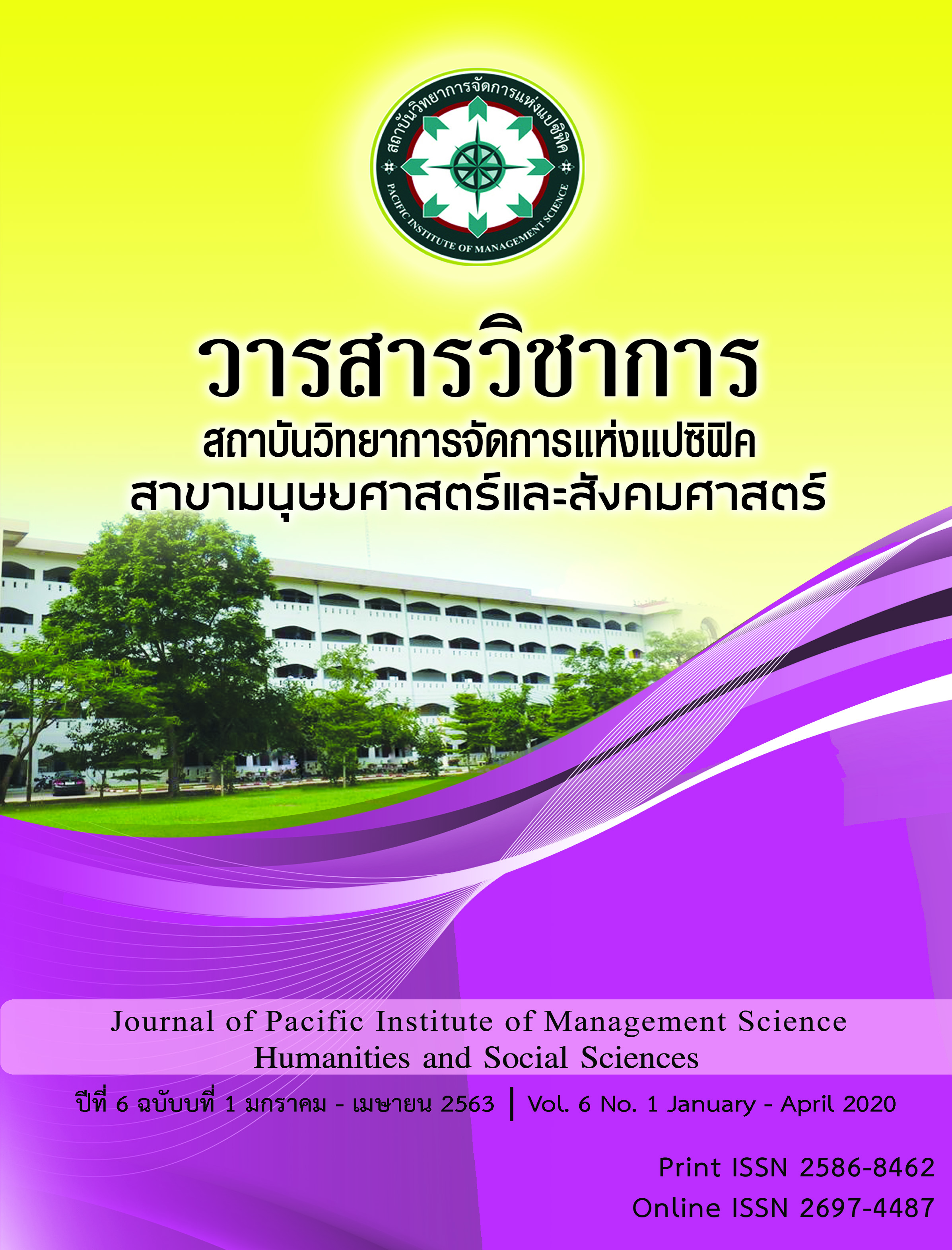The Causal Relationship Model of E-Marketing Strategy Effectiveness in the Business Performance in Thailand
Keywords:
E-Marketing Strategy, Effectiveness, Business PerformanceAbstract
The objective of the research were 1) To study strategic factors in the aspect of e-marketing strategy effectiveness in the business performance in Thailand. 2) To study the influence of strategic factor in the aspect of e-marketing strategy effectiveness in the business performance in Thailand. 3) To develop strategic model for e-marketing strategy effectiveness in the business performance in Thailand. It is mixed methods collecting data from a group of e-commerce entrepreneurs in order to study the internal and external environment of the organization and consumer behavior influencing strategic factor in the e-marketing strategy and the effectiveness of Thai business performance. The tool in this research is interview and questionnaires by collecting as qualitative model with in-depth interview method of 10 samples with quantitative question of 400 samples. Researchers use descriptive analysis as the percentage, standard deviation, and mean in terms of Pearson’s analysis of correlation coefficient with LISREL for Windows version 8.80 program.
The result indicated that the cause of all factors influences directly positive to e-marketing strategy and with effectiveness in the business performance in Thailand significantly as the statistical number of 0.01.
References
ภาวุธ พงษ์วิทยภานุ. (2551). e-Commerce สุดยอดช่องทางรวย ทุนน้อย ทำง่าย สร้างรายได้ 24 ชั่วโมง. ครั้งที่พิมพ์ 2. กรุงเทพฯ: พงษ์วรินการพิมพ์.
ศูนย์เทคโนโลยีอิเล็กทรอนิกส์และคอมพิวเตอร์แห่งชาติ. (2553). บทสรุปหนึ่งทศวรรษการสำรวจกลุ่มผู้ใช้อินเตอร์เน็ตประเทศไทย. (2542-2553). กรุงเทพฯ: ศูนย์เทคโนโลยีอิเล็กทรอนิกส์และคอมพิวเตอร์แห่งชาติ.
ศิริวรรณ เสรีรัตน์. (2546). การบริหารการส่งเสริมการตลาด. สำนักพิมพ์มหาวิทยาลัยกรุงเทพฯ.
อู่อ้น, & วิชิต. (2554). การใช้แบบจำลองส่วนประสมทางการตลาดเพื่อศึกษาการตัดสินใจเลือกเข้าศึกษาต่อในระดับปริญญาตรีของนักศึกษาในสถาบันอุดมศึกษาเอกชน. วารสารวิทยาลัยพาณิชยศาสตร์ บูรพาปริทัศน์, 3(1), 34-43
Andreson & Srinivasan, (2003). Marketing An Introduction. 9th ed. Newfersey : Pearson Education.
Armstrong, Gary and Kotler, Philip. (2007). Marketing An Introduction. 8th ed. New jersey: Pearson Education.
Bahmanziari T., Pearson & J. M.,Crosby, L. 2003. “Is trust important in technology adoption ? A
policy capturing approach,” The Journal of Computer Information Systems.
Boyd, M.; & Ellison, B. (2008). Social Network Sites: Definition, History and Scholars. Journal of Computer-Mediated Communication. 13: 210-230.
Duncan, T. (2005). IMC in industry more talk than walk. Journal of Advertising, 34 (4), 5-6.
Etzel, walker and Stanton. (2007). Marketing14 International Edition 2007, McGraw-Hill. Companies, 2007
Hair; et al. (2010) Marketing research with in a changing information environment. New York: McGraw–Hill. Second Edition.
Kardes, Cronley; & Cline. ( 2011) Principles of Marketing. 13th Edition. Pearson Education.
Philip Kotler & Kevin Keller, ( 2006) Marketing Management. 12th ed. Upper Saddle River: Pearson Prentice Hall.
Schiffman, L.G.; & Kanuk, L.L. ( 2000 ) Consumer Behavior. 10th ed. New York: Prentice Hall.
Smith, P.R. and Chaffey D (2005). E-MarketingeExcellence: at the heart of e-Business.Butterworth Heinemann, Oxford, UK.
Solomon. M.R. (2009). Consumer Behavior: Buying, Having and Being. 8th ed. New Jersey: Prentice Hall.
Downloads
Published
Issue
Section
License
บทความที่ได้รับการตีพิมพ์เป็นลิขสิทธิ์ของ สถาบันวิทยาการจัดการแห่งแปซิฟิค
ข้อความที่ปรากฏในบทความแต่ละเรื่องในวารสารวิชาการเล่มนี้เป็นความคิดเห็นส่วนตัวของผู้เขียนแต่ละท่านไม่เกี่ยวข้องกับสถาบันวิทยาการจัดการแห่งแปซิฟิค และคณาจารย์ท่านอื่นๆในสถาบันฯ แต่อย่างใด ความรับผิดชอบองค์ประกอบทั้งหมดของบทความแต่ละเรื่องเป็นของผู้เขียนแต่ละท่าน หากมีความผิดพลาดใดๆ ผู้เขียนแต่ละท่านจะรับผิดชอบบทความของตนเองแต่ผู้เดียว







